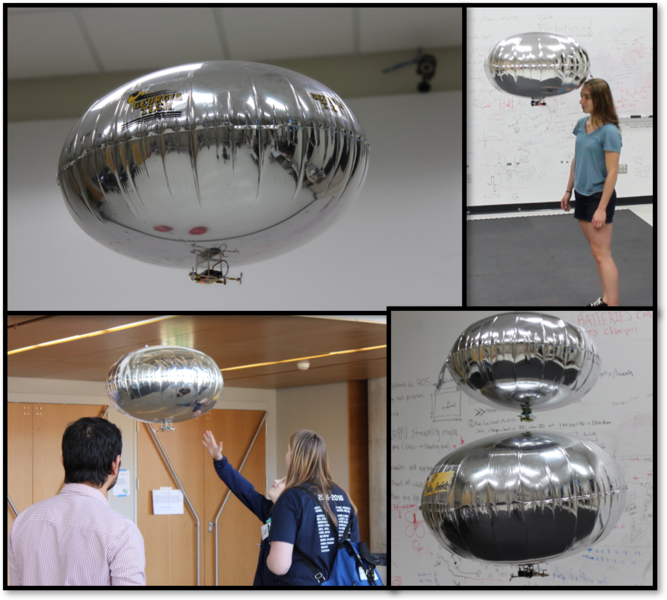Researchers have developed a miniature autonomous blimp for use with research in the areas of human robot interaction, swarming, and environmental mapping and education. The blimp comprises an envelope with a saucer shape for stabilization along the two axes of rotation. The blimp also involves a gondola with four propellers and is driven by four motors to control the vertical and horizontal motion. The gondola harbors the electronics and electrical components including a processor, wireless communication module, camera, IMU (inertial measure unit), a battery and a sensor. The modular design of the blimp allows for various type of sensor attachments including range, light, humidity, sound, CO2 etc.
This technology has been integrated with two others—a motion capture marker (8528) and flight control system (8591)—into a full-scale prototype. (The three inventions can also be used independently.) Functionality tests of the integrated system demonstrated successful performance and reliability for nearly one year. Videos of these tests are available on the research team’s YouTube channel.
- Miniature size and low cost
- Flight duration of more than 3 hours
- Safe interaction with humans
- Outstanding stability and maneuverability
- Aerial Internet of Things (IoT) sensing platform
- Human robot interaction- facial recognition and recognizing human gestures
- Personal shopping aid in a supermarket
- Guiding groups in large public facilities
- Environmental mapping
- Surveillance, inspection of structures, and videography
- Scientific research and education
Robotic platforms are an integral part of research and development in the field of autonomy, particularly with the advent of highly maneuverable and simple multi-copters (aerial vehicles). Limited flight time and safety of the personnel around multi-copters are the major concerns and limit the applications to mostly outdoors use of approximately 30 minutes. There is a need for technology with longer flight time and is safe for interaction with human beings.

